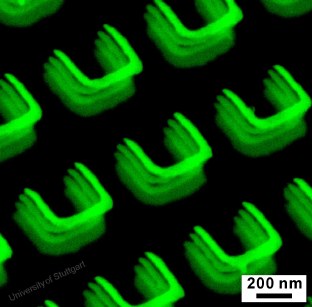Everyone knows the first words spoken by a man on the moon, but what were the last words? This isn’t just a good pub quiz question, it’s also an affront to the notion that technological progress moves inexorably forward. To critics of the idea that technology is relentlessly accelerating, the fact that space travel now constitutes a technology that the world has essentially relinquished is a prime argument against the idea of inevitable technological progress. The latest of such critics is David Edgerton, whose book The Shock of the Old is now out in paperback.
Edgerton’s book has many good arguments, and serves as a useful corrective to the technological determinism that characterises quite a lot of discussion about technology. His aim is to give a history of innovation which de-emphasises the importance of invention, and to this end he helpfully draws attention to the importance of those innovations which occur during the use and adaptation of technologies, often quite old ones. One very important thing this emphasis on innovation in use does is bring into focus neglected innovations of the developing world, like the auto-rickshaw of India and Bangladesh and the long-tailed boat of Thailand. This said, I couldn’t help finding the book frequently rather annoying. Its standard rhetorical starting point is to present, generally without any reference, a “standard view” of the history of technology that wouldn’t be shared by anyone who knows anything about the subject: a series of straw men, in other words. This isn’t to say that there aren’t a lot of naive views about technology in wide circulation, but to suggest, for example, that it is the “conventional story” that the atomic bomb was the product of academic science, rather than the gigantic military-industrial engineering activity of the Manhatten Project, seems particularly far-fetched.
The style of the book is essentially polemic and anecdotal, the statistics that buttress the argument tending to be of the factoid kind (such as the striking assertion that the UK is home to 3.8 million unused fondue sets). In this and many other respects I found it a much less satisfying book than Vaclav Smil’s excellent 2-volume history of modern technology, Transforming the Twentieth Century: Technical Innovations and Their Consequences and Creating the Twentieth Century: Technical Innovations of 1867-1914 and Their Lasting Impact
. These books reach similar conclusions, though Smil’s arguments are supported by substantially more data and carry a greater impact for being less self-consciously contrarian.
Smil’s view – and I suspect that Edgerton would share it, though I don’t think he states it so explicitly – is that the period of history in which there was the greatest leap forward in technology wasn’t present times, but the thirty or forty years of the late 19th and early 20th century that saw the invention of the telephone, the automobile, the aeroplane, electricity, mass production, and most important of all, the Haber-Bosch process. What then of that symbol of what many people think of as the current period of accelerating change – Moore’s law? Moore’s law is an observation about exponential growth of computer power with time, and one should start with an obvious point about exponential growth – it doesn’t come from accelerating change, but constant fractional change. If you are able to improve a process by x% a year, you get exponential growth. Moore’s law simply tells us that the semiconductor industry has been immensely successful at implementing incremental improvements to their technology, albeit at a rapid rate. Stated this way, Moore’s law doesn’t seem so out of place in Edgerton’s narrative of technology as being dominated, not by dramatic new inventions, but by many continuous small improvements in technologies old and new. This story, though, also makes clear how difficult it is to predict, before several generations of this kind of incremental improvement, which technologies are destined to have a major and lasting impact and which ones will peter out and disappoint their proponents. For me, therefore, the lesson to take away is not that new developments in science and technology might not have major and lasting impacts on society, it is simply that some humility is needed when one tries to identify in advance what will have lasting impact and what those impacts will end up being.
On December 17th, 1972, Eugene A. Cernan said the last words by a man on the moon: “OK Jack, let’s get this mutha outta here.”
